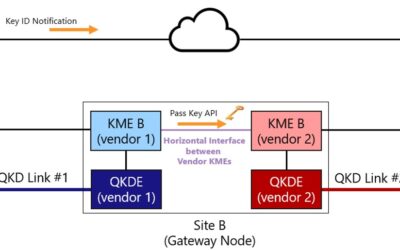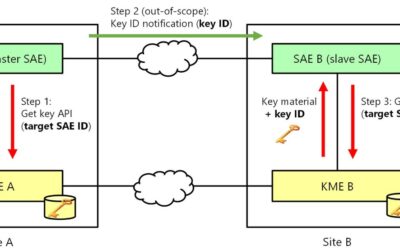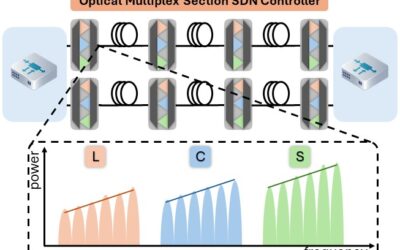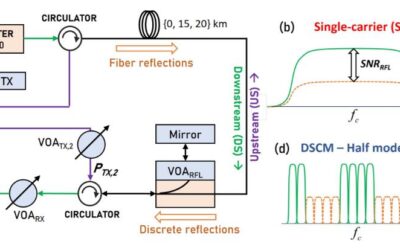About ALLEGRO ‘Agile ultra low energy secure networks’
 ALLEGRO aims at designing and validating a novel end-to-end sliceable, reliable, and secure architecture for next-generation optical networks, achieving high transmission/switching capacity
ALLEGRO aims at designing and validating a novel end-to-end sliceable, reliable, and secure architecture for next-generation optical networks, achieving high transmission/switching capacity
- with 10 Tb/s for optoelectronic devices and 1 Pbt/s for optical fiber systems
- low power consumption/cost
- with > 25% savings
- and secure infrastructures and data transfers.
The architecture relies on key enabling innovations:
- smart, coherent transceivers exploiting multi-band & multi-fiber technologies for P2P and P2MP applications, based on e.g., high-speed plasmonic modulators/photodetectors and programmable silicon photonic integrated waveguide meshes;
- loss-less, energy-efficient transparent photonic integrated optical switches, eliminating OEO conversions, e.g., with on-chip amplification in the O-band for datacom applications;
- a consistent approach to security, in terms of functional/ protocol architectures and communications, further improving QKD systems, enabling optical channel co-existence and researching on quantum-resistant (post-quantum) cryptography, developing systems based on physically unclonable functions; and
- a scalable AI/ML assisted control and orchestration system, responsible for autonomous networking, dynamic and constrained service provisioning, function placement and resource allocation, leveraging devices increasing programmability and overall network softwarization.
To achieve the target objectives and KPIs, ALLEGRO has defined a clear methodology ending in ambitious demonstrators. The consortium includes a good balance of industry and research/academia with know-how in complementary fields.
The results of ALLEGRO will be disseminated in leading conferences, events, and high-impact journals. They will have a concrete and measurable economic and social impact, contributing towards achieving key European objectives, reinforcing European leadership and digital sovereignty in the ongoing digital and green transition.
Project News
Advancing Quantum-Classical Integration in Optical Networks with ALLEGRO
We are excited to showcase the ALLEGRO-proposed ROADM node architecture, designed to enable seamless integration of classical signals from an S-BVT and switched QKD signals. 📡 Key Features & Innovations:✅ O-band DVQKD compatibility – Supports classical channel...
Advancing Quantum-Classical Coexistence in Optical Networks
In our latest work, we explore a three-degree ROADM node design that seamlessly integrates C-band classical signals with O-band quantum signals. 🔹 Key Features:✅ High filtering precision: A band-pass filter (BPF) eliminates out-of-band noise, followed by a band...
Node Architecture for Classical-Quantum Signal Coexistence
As quantum communication advances, ensuring the coexistence of classical and quantum signals is crucial for future secure networks. In the ALLEGRO project, we explore how Quantum Key Distribution (QKD) can be integrated into existing infrastructure, balancing...
Securing the Future: Hybrid Post-Quantum Cryptography
The rise of quantum computing threatens traditional cryptographic systems, pushing the community to adopt post-quantum cryptography (PQC) following NIST's 2016 call for proposals. While PQC algorithms promise resistance to quantum attacks, their security against...
End-to-End Encryption in Optical Transport Networks
With the increasing demand for secure high-capacity communications, OTN encryption has emerged as a powerful solution for protecting data beyond the traditional ITU-T OTN G.709 framework in metro and core networks. By encrypting the OTN transport payload frame (OPUk),...
Standard Interfaces for High-Capacity Optical Encryption
In today's high-speed communication networks, encryption plays a critical role in securing end-to-end data transmission. From the data plane to the key, control, and management planes, encryption must seamlessly integrate across all layers. Operators and customers can...
Advancing GSNR Estimation & Power Optimization with ALLEGRO
In ALLEGRO, we continue pushing the boundaries of machine learning (ML) models to enhance GSNR estimation and power optimization in optical networks. Our latest research evaluates key parameters influencing these models, including: 🔹 Channel activity & idle states...
Optimizing Optical Networks with ALLEGRO: Advancing Power Optimization & AI in QoT Estimation
In ALLEGRO, we've been diving deep into innovative methods to enhance pre-tilt power optimization and improve AI-driven GSNR and LP QoT estimation. Our latest study demonstrates how solving interrelated inverse differential equations can optimize pre-tilt power,...
Exploring Power Optimization and GSNR Estimation in Multi-Band Optical Systems
As optical networks evolve beyond the traditional C-band, power optimization becomes increasingly complex. The LOGO approach has been a reliable method for determining optimal signal launch power within the C-band. However, as we expand into multi-band transmission,...
Launch of Power Optimization in Single-Fibre, Single-Wavelength Coherent P2P Transport Networks
As mobile transport networks evolve, the need for high-capacity, single-fibre bidirectional (Bi-Di) transmission links becomes increasingly critical to maintain strict timing and synchronization requirements. In the ALLEGRO project, we are pushing the boundaries of...
